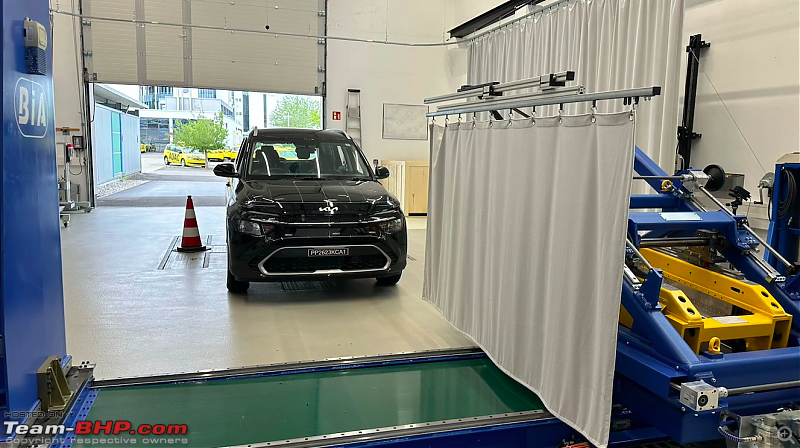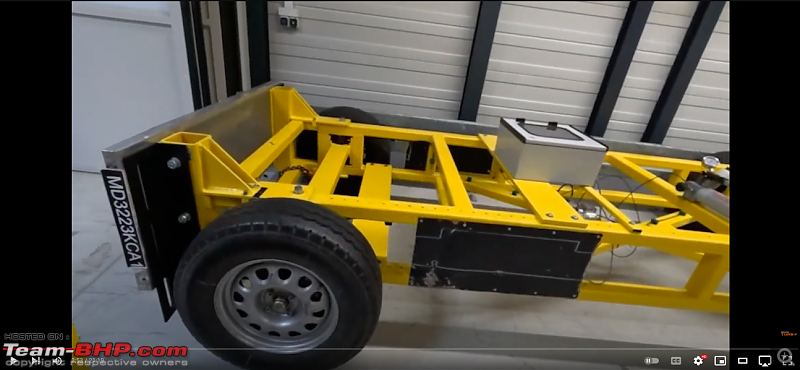Quote:
Originally Posted by krishnakumar  I'm sorry, you have me terribly confused across your multiple posts. Are you saying the test score has no bearing on whether the manufacturer has built a better chassis? I find it hard to believe that. |
Achieving better structural performance in the test (and consequently the car-to-car crashes it is designed to represent) would require the passenger compartment to be strengthened but it would be a mistake to think that that does not mean it has to be separately designed for other crashes, even frontal ones. For example, in the IIHS' 25% overlap rigid barrier test passenger compartments collapsed not because of weak structure (they all did well in the 40% test) as much as bad design: the test intentionally misses the front longitudinal members and unless a car is designed to dissipate energy through the wheel arch and sill it would still do badly.
It's also worth noting that structure is far from the only thing that the results indicate. Of course, if the passenger compartment collapsed dummy readings would directly be affected but with a passenger compartment that holds it shape, even if it doesn't necessarily remain stable, dummy readings are likely to be unaffected. There are few penalties for structure: steering wheel movement, A-pillar movement, pedal movement and stability of the passenger compartment and footwell. Most of the assessment is still based on dummy readings, so a higher star rating does not
imply better structural performance eg. structurally Jazz and Polo were as good as Altroz, the issues were with not having a dual pretensioning solution to protect knees of differently sized/seated occupants.
Quote:
Originally Posted by krishnakumar  I understand that manufacturers design their cars keeping the tests in mind but aren't the tests themselves designed to represent "average" real-life situations? |
TL;DR: not exactly, and definitely not in India.
To give you an idea (based on what I've read) of where this offset deformable barrier crash comes from:
Most of the research for car safety in the 1990s was for car-to-car crashes which is why the EEVC (a collaborative committee of European research laboratories) developed the deformable barrier to represent another car (much more realistic than a flat wall). Other crashes like underrides for example have always been deadly but (presumably based on consultations with the industry) it would be unreasonable to expect passenger cars to be designed around them.
1998 crash statistics (
see page 2441) by TRL (
UK) showed crashes showed that
among frontal car-to-car crashes 50% of those in which there was ≥serious injury happened under 55km/h, and that's why the UNECE's R94 test (the 'European standard' Maruti harps about) takes place at 56km/h into a deformable barrier and requires dummy readings to indicate lower-than-moderate risk of serious or worse injury. In 1997 the FIA founded Euro NCAP, a
consumer-testing programme, whose frontal impact simulated
both cars travelling at ~55km/h (hence 64km/h into a deformable barrier) and asking for much lower injury criteria to score maximum points, less than a 5% risk of serious or worse injury, and also applying 'modifiers' (subjective penalties) to improve relevance. The IIHS also started a similar test in 1995, although their scoring framework is quite different. As every manufacturer strived to achieve five stars (good sales argument) the test became accepted as the "industry standard".
In 2010 the FIA (with technical help from Euro NCAP), started Latin NCAP to highlight how substandard vehicles in Latin America were, using the same 64km/h frontal offset deformable barrier test, no matter if Latin American crashes were possibly not remotely close to those in the UK in 1998. The idea was to use independent consumer-testing to encourage safer vehicle design even in weakly regulated markets by highlighting differences from European cars, and to expand it further Global NCAP started in 2011. In 2014 they meant to do a simple one-round experimental campaign for India based on Latin NCAP protocols, thankfully
politics with Max Mosley and Datsun mean it survives to this day. But it's still that, a philanthropic campaign on a tight budget, aimed at showing consumers differences from European cars based on what was an 'average crash' in 1990s Europe. Definitely
not 'average' in 2022 India.
Is it useless? Well, no, there are still some crashes that happen like that in India. Are you willing to give so much importance to a single crash, a quite
infrequent one, at that? That's best left to the consumer. Me, personally, I'd rather have a car that's likely to prevent, or protect reasonably well in more types of crashes (still average European ones) rather than one that would protect extremely well but in
just one, but it doesn't mean I don't care about the test: 0 stars would be a deal-breaker, but 4 or 5 stars wouldn't be a deal maker unless paired with other important crash protection and prevention tech (eg. top-end XUV300/700/presumably VW 2.0s, MGs, 5th-gen City). 3 stars paired with questionable 'other tech'? I don't think there's much wrong with demanding better from Kia.
Quote:
Originally Posted by krishnakumar  I see the tests as certain standards. For example, like how we have building codes and thumb rules. Sure, it'll not work for all scenarios; anybody who thinks that is just fooling themselves. But it does represent the average and hence, it would matter. |
You can't use American building codes in India if they're designed around wooden houses!
 (4)
Thanks
(4)
Thanks
 (1)
Thanks
(1)
Thanks
 (4)
Thanks
(4)
Thanks
 (1)
Thanks
(1)
Thanks
 (1)
Thanks
(1)
Thanks
 (2)
Thanks
(2)
Thanks
 (1)
Thanks
(1)
Thanks
 (4)
Thanks
(4)
Thanks
 (1)
Thanks
(1)
Thanks
 (9)
Thanks
(9)
Thanks
 (8)
Thanks
(8)
Thanks
 (2)
Thanks
(2)
Thanks





 , hopefully there will be none.) , do not think there was any damage to the belt. What would this indicate.
, hopefully there will be none.) , do not think there was any damage to the belt. What would this indicate.



